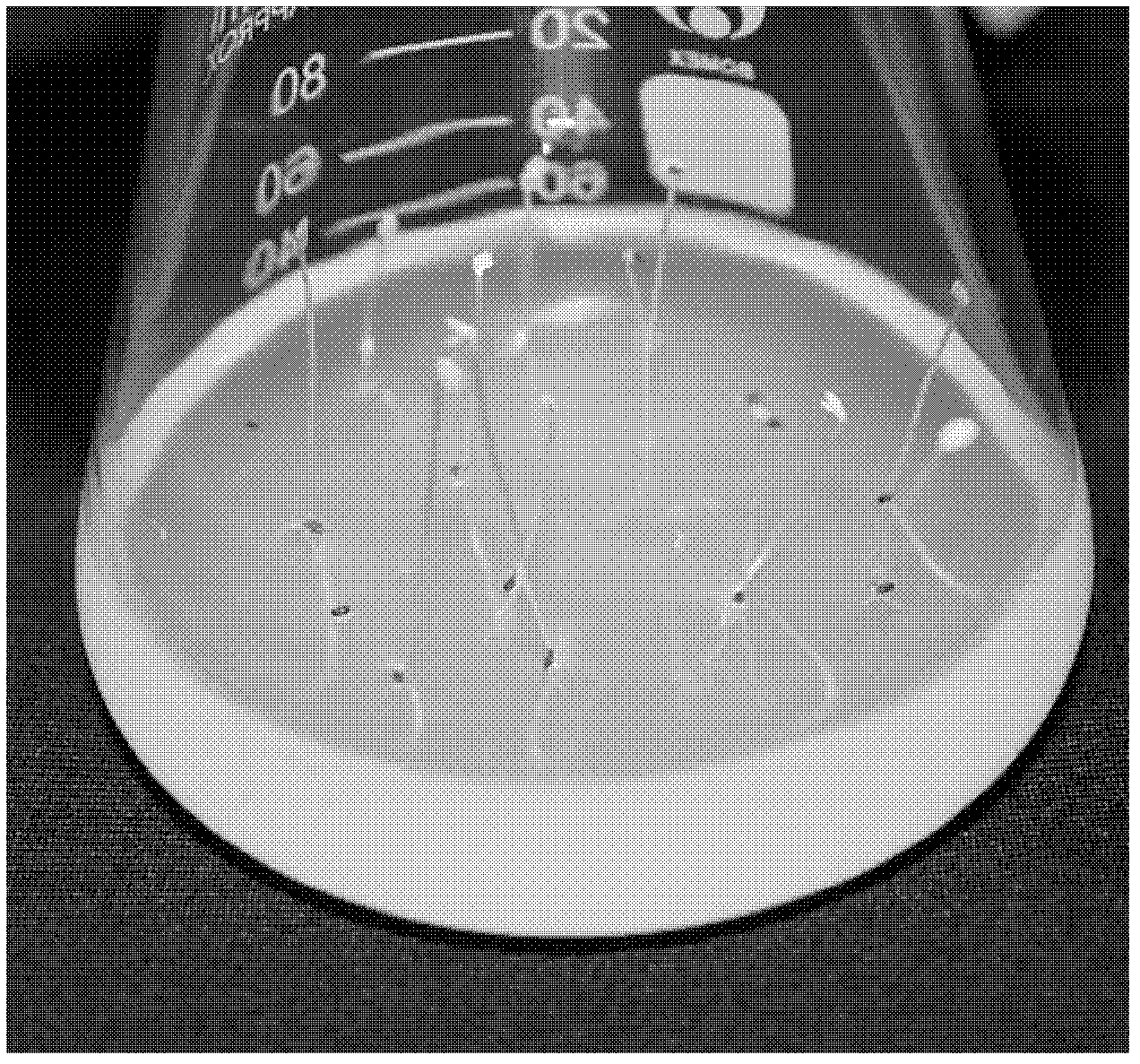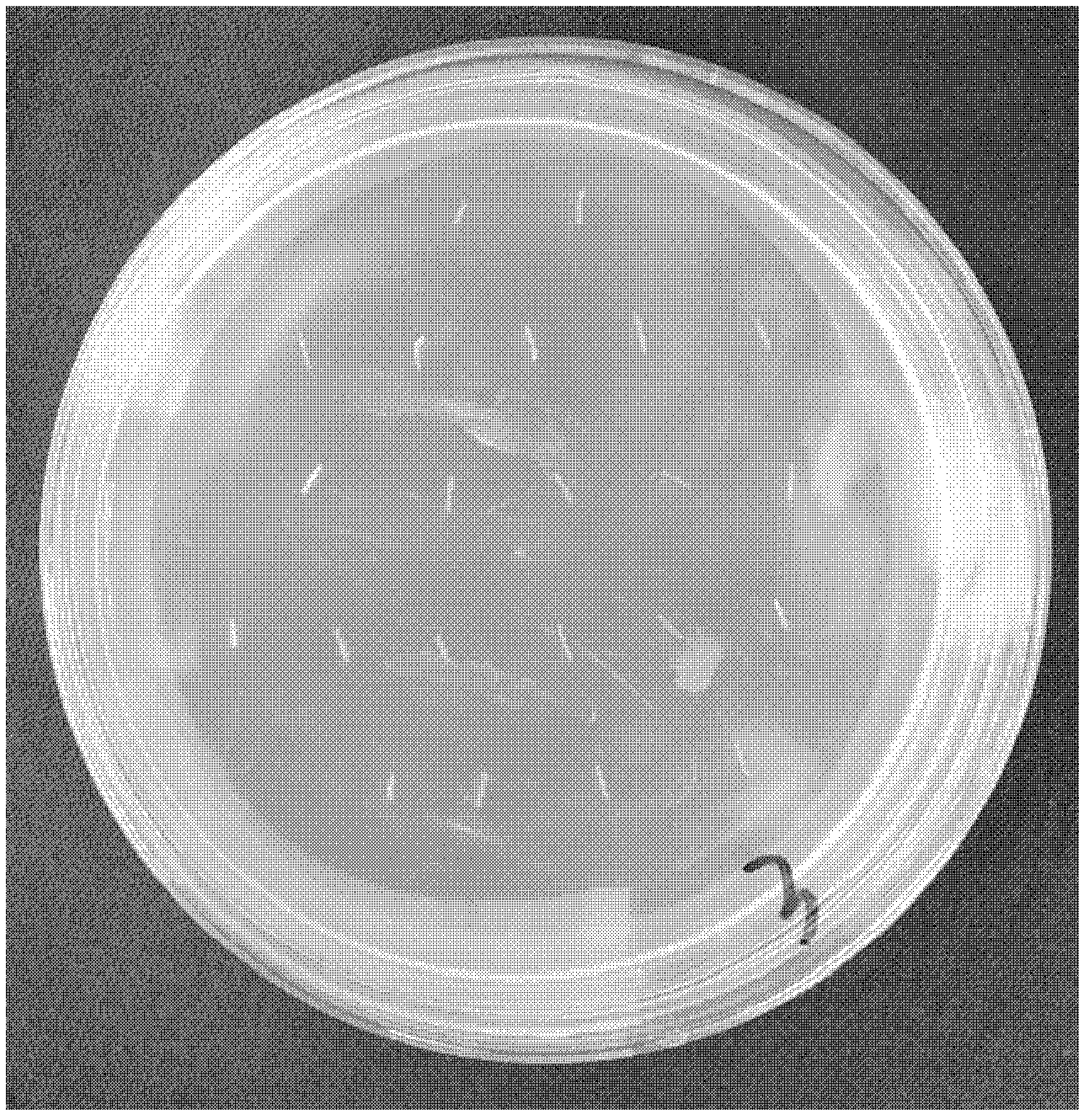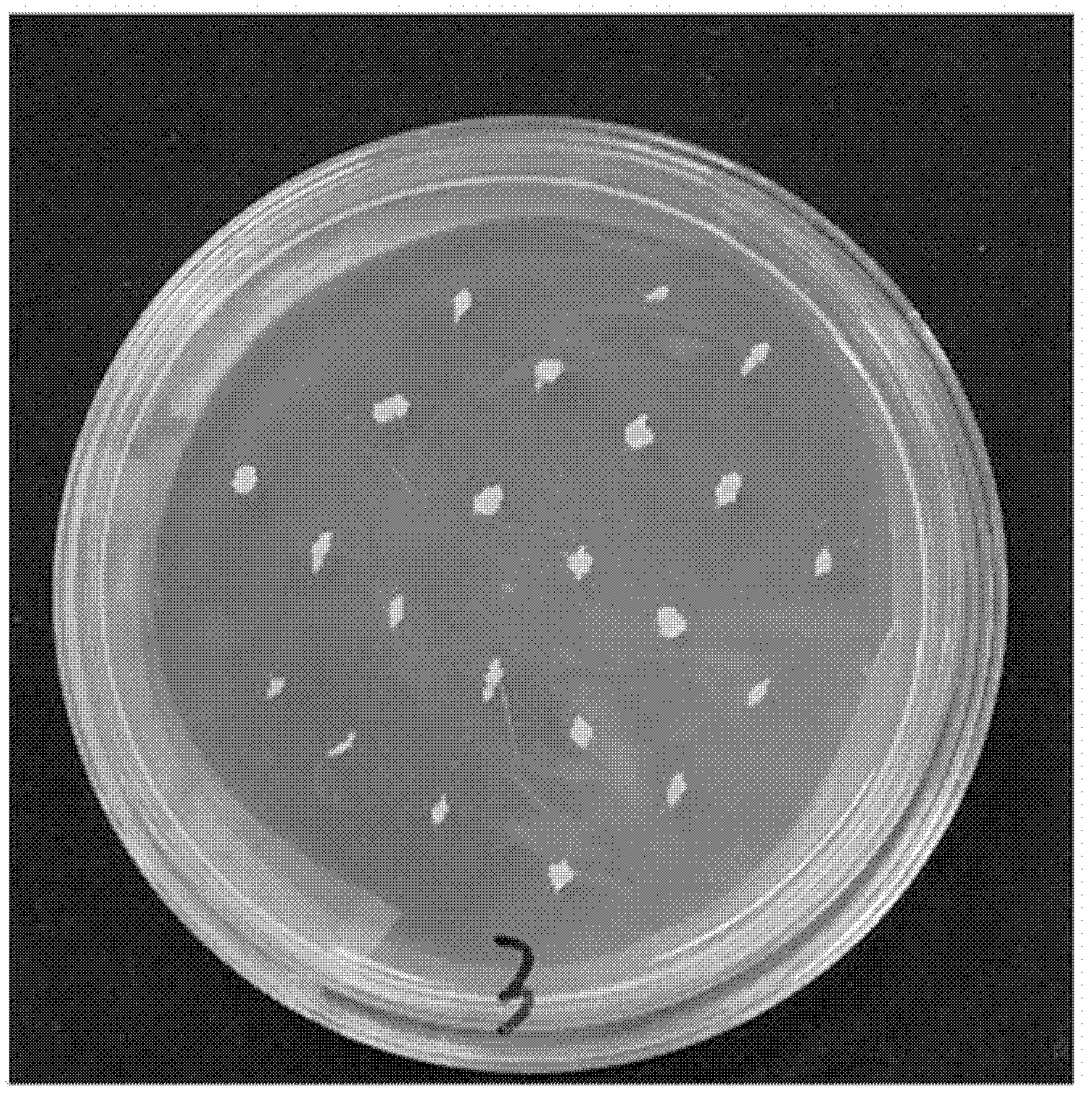Method for breeding chamomile
The technology of chamomile and seeds is applied in the field of plant tissue culture, and can solve the problems of unfavorable large-scale chamomile, industrialized production and cultivation, low callus induction rate and adventitious bud differentiation rate, and failure to obtain a chamomile regeneration system, To achieve the effect of promoting callus growth, good growth state and consistent size
- Summary
- Abstract
- Description
- Claims
- Application Information
AI Technical Summary
Problems solved by technology
Method used
Image
Examples
Embodiment 1
[0052] 1. Test materials
[0053] 1. Camomile seeds: collected from the campus of Beijing Forestry University in the autumn of 2009. The planting plants grew well, the seeds were mature and full, and the seed coats were intact.
[0054] 2. Plant growth regulator
[0055] The plant growth regulator used in the present invention adopts domestic naphthalene acetic acid (NAA), 6-benzylamino adenine (6-BA) and 2,4-dichlorophenoxyacetic acid (2,4-D).
[0056] 3. Preparation of culture medium:
[0057] (1) The composition or preparation method of "MS basic medium";
[0058] Table 1 MS medium (Murashige and Skoog, 1962)
[0059]
[0060] After the above MS medium stock solution is prepared, it should be stored in a refrigerator at 4°C until use. According to the quantity of the preparation medium, weigh the required agar and sucrose, pour them into sterile water of 3 / 4 of the volume of the medium to be prepared, and sequentially add the required macroelement mother liquor, trace element mother l...
Embodiment 2
[0092] The culture time is 5 days except for sterile seedlings; 2,4-D 0.5mg / L, 6-BA 0.1mg / L used in callus induction medium; NAA 0.2mg / L used in rooting medium; light for adventitious bud differentiation culture Except for the period of 14 hours of light / 10 hours of darkness, the others are the same as in Example 1.
Embodiment 3
[0094] Except for aseptic seedlings, the culture time is 6 days; the callus induction medium uses 2,4-D 1.0mg / L, 6-BA 1.0mg / L; the adventitious bud differentiation culture light cycle is 14 hours of light / 10 hours of darkness; The rooting medium used NAA 0.3 mg / L, and the photoperiod was 14 hours of light / 10 hours of darkness, and everything else was the same as in Example 1.
PUM
 Login to View More
Login to View More Abstract
Description
Claims
Application Information
 Login to View More
Login to View More - R&D
- Intellectual Property
- Life Sciences
- Materials
- Tech Scout
- Unparalleled Data Quality
- Higher Quality Content
- 60% Fewer Hallucinations
Browse by: Latest US Patents, China's latest patents, Technical Efficacy Thesaurus, Application Domain, Technology Topic, Popular Technical Reports.
© 2025 PatSnap. All rights reserved.Legal|Privacy policy|Modern Slavery Act Transparency Statement|Sitemap|About US| Contact US: help@patsnap.com



